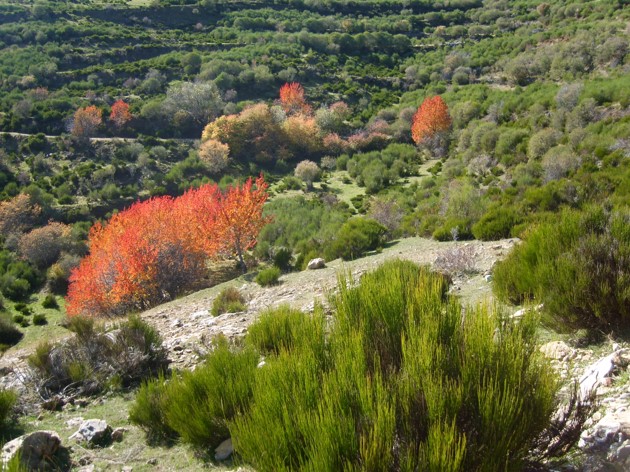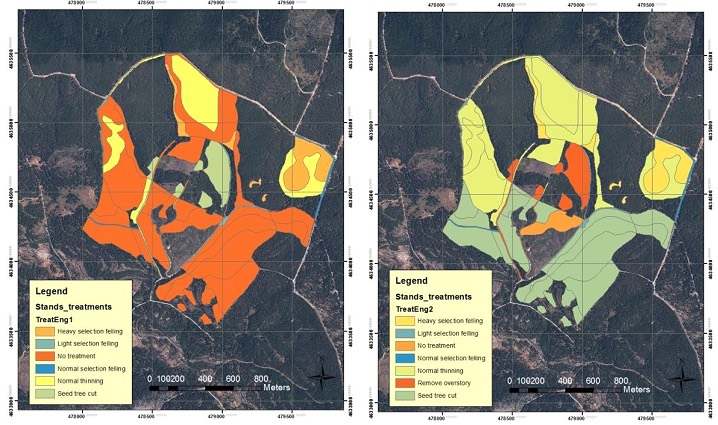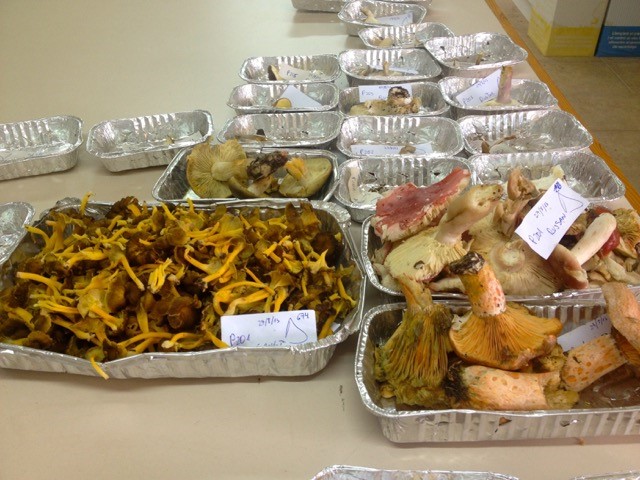
Applied Community Dynamics
Did you know that plant communities are temporally and spatially
dynamic?
We are working on the causes and consequences of vegetation changes across
Mediterranean
and Temperate ecosystems , to provide solutions to current land management problems.

Archaeobotanical remains and palaeoenvironments
Most archaeobotanical remains are found carbonised; fortunately, the isotopic signal recorded
in wood or seeds are partly preserved in charcoal or charred grains, allowing for long term reconstructions of
anthropic or
climatic events.

We know that fires burn only when forests are dry but, how dry, or how hot do they need to be? We have developed the first models to predict moisture in fine litter across landscapes and have developed the moisture thresholds on probability of fire occurrence across bioregions.

Forest dynamics & functioning
How do trees grow, regenerate and die? How will forests evolve in the future? We have developed models to predict stand dynamics and yield for different tropical, mediterranean and temperate ecosystems, combining advanced modelling and optimization techniques, and meta-analysis.

Forest management planning
Forests provide multiple ecosystem services but, how to combine and optimize them? We assess
trade-offs and optimal combinations among different
ecosystems services to improve multi-objective forest management planning at multiple scales, from
stand to
landscape levels.

Fungal ecology & diversity
We know that fungi are a key component of
forest ecosystems ,
but their role in all the ecological processes are still poorly known. We contribute
to disentagling
this fascinating kingdom, providing new insights into the
ecology and diversity of fungi.

Modelling tree-ring patterns
Advanced modelling of tree-ring data provides clearer and more structured information on spatial tree responses
to climate instability. This is useful to improve our understanding of forest performance and dynamics underlying
complex biogeographical interactions at regional and sub-continental scales.

Did you know that trees and
ecosystems lose a substantial amount of water overnight?
Yeap, that's true, and we have been exploring different possible functions such as whether it
serves to increase nutrient
delivery, or daytime photosynthesis, the challenge is still on!

NWFP & Ecosystem services
Forests are
much more than wood and timber. Our group provides new evidences about the socioeconomic and ecological
importance of wild forest products and
ecosystem services with the aim of supporting decision making in forest and environmental policies.

We're interested in discovering ways to increase
forest production and biomass
to diminish our plastic-dependency. We've
synthesized information on processes
under genetic control to help breeding
under elevated CO2
that will need less water .
Check out this cool
commentary.

Did you know that
black truffles are one of the most valuable products
in the Mediterranean basin? We are contributing to improve the
cultivation techniques of such amazing species.












